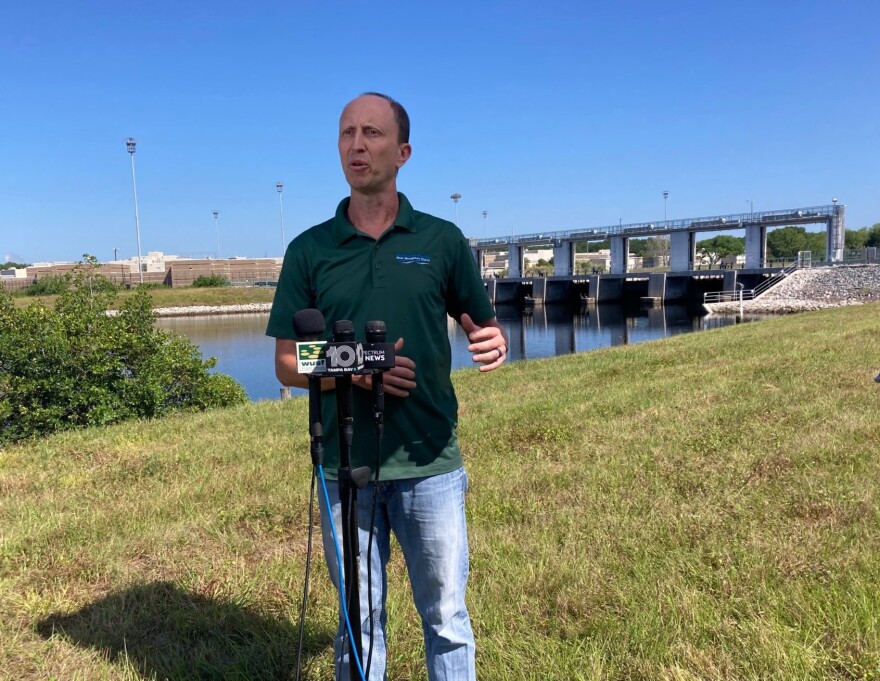Jerry Mallams stands in front of the concrete and steel structure. It's part of the Tampa Bypass Canal, which diverts overflows from the Hillsborough River. He's operations bureau chief at the Southwest Florida Water Management District.
The above video was taken two years ago by the water district when the floodgates were opened.
It's part of a system set up after Hurricane Donna devastated Tampa and Temple Terrace in 1960. But as they near a ripe old age, the structure's steel floodgates and lift gates will have to be rebuilt.

“(The) city of Tampa is built all around that river. So there's a lot of urbanization nestled up very, very close to this river,” he said. “So when this river comes out of its banks, it can cause a lot of damage, not only to residential but to industry, commercial, very quickly, as well as all the associated infrastructure, the roads, the power lines and all of that.”
Mallams said the structure was activated in 2017 when Hurricane Irma struck. Water was diverted around the city of Tampa for a month. About three billion gallons a day were diverted through this structure, minimizing flooding in Tampa and Temple Terrace. He said it has the capacity to move around 17 billion gallons a day.
“Even with the diversion, the river gets high, it doesn't cause flooding, but it gets, it gets pretty high,” he said. “So you add three billion gallons of water on top of that and surely would have caused structure flooding within the cities of Tampa and Temple Terrace.”

Officials are concerned about sea level rise even here, several miles upstream from where the canal flows into an arm of Tampa Bay.
“What we are doing is anticipating sea level rise and increased saltwater exposure to this structure,” Mallams said. “And we want to make sure that the steel components of the structure - not only the steel within the concrete - is protected from that increased exposure to sea water, but that the steel gates are going to be replaced with stainless steel gates that are going to be resilient to that saltwater.”
Mallams says in the coming decades, the canal could be at least a foot higher.
The project is still in the design phase. He said it is estimated to cost $2.4 million for reinforcing the concrete, with half of that money coming from a state grant.










